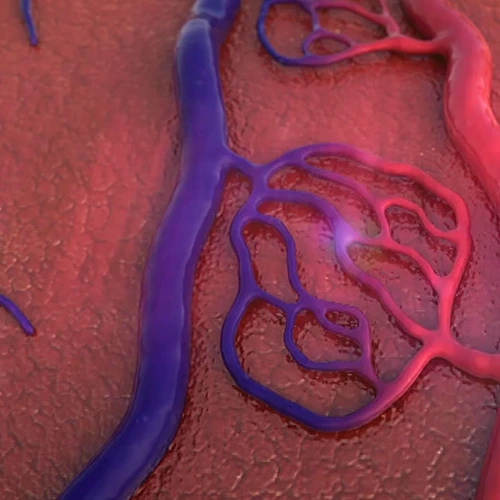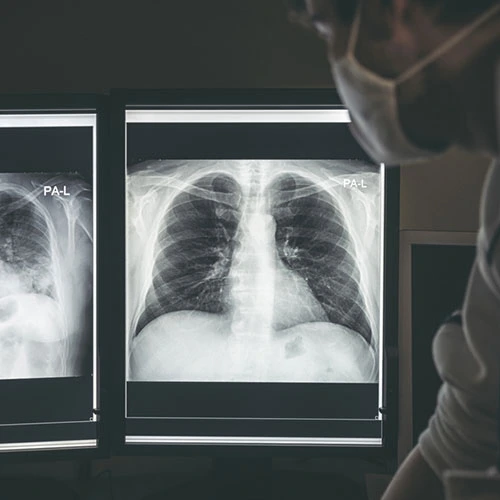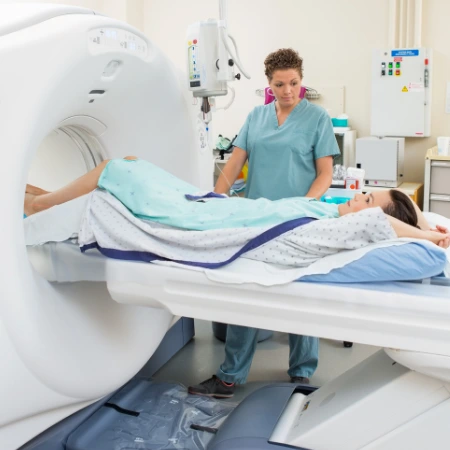
Vein Access Injection of Contrast
Vein Access Technologies acknowledges that the venipuncture is a ‘surgical’ procedure that should be taught as such and executed as such – this requires teaching and training.
- Approved by the ASRT (American Society of Radiologic Technologists) for 4.00 Category A CE Credits
- Subscription duration: 365 days from purchase date
- Downloadable transcript available
- Meets the CE requirements of the following states: California, Texas, Florida, Kentucky, Massachusetts, and New Mexico
- Meets ARRT® CE reporting requirements
- Accepted by the NMTCB®
- Hassle-free 30-day full refund policy*
Radiology is one of the three foundational pillars in the practice of Medicine: Nursing, Laboratory Medicine & Radiology. Radiology, along with Laboratory Medicine, makes a huge contribution to the diagnostic medical process, and this makes the injection of contrast procedure a very important tool – it must yield an accurate result. And the World is just beginning to recognize the role that the ‘venipuncture’ component of these diagnostic tools plays in the outcome of that medical encounter. In summary, a scientifically performed venipuncture can be trusted to yield an accurate result, with an accurate diagnosis, followed by accurate treatment, with a predictable medical outcome. And the converse is even more true: a venipuncture performed in violation of the laws of Science, Technology, Engineering, & Math (STEM) ends with inaccurate results, inaccurate diagnosis, inaccurate treatment, and altered medical outcome.
Vein Access Technologies acknowledges that the venipuncture is a ‘surgical’ procedure that should be taught as such and executed as such – this requires teaching and training. So, Vein Access Technologies took STEM and applied it to the venipuncture procedure – changing the ‘way’ in which venipuncture is performed, and all but eliminated the compromises, complications, injuries, and failures associated with current practices. Understanding the Anatomy, Physiology, Chemistry, Physics, Math, Engineering, and Technology as related to all the components of the venipuncture procedure takes this to a higher level – with confidence and competence.
This new method uses a new palpation technique to locate veins, a new needle insertion technique for accessing veins, and a new infusion method prevents infiltration and insures a ‘scientific’ infusion of contrast. The new VAT developed palpation technique uses 70% Isopropyl Alcohol as a palpating tool for locating, dilating, and grading veins to insure that a ‘healthy’ vein (one that won’t rupture upon venipuncture), with a needle gauge determined by the size of the vein selected; and this new VAT developed needle insertion technique cuts less vein wall (maintaining vein wall integrity), minimizes (if not eliminates) the infiltration, and assesses the Rad tech’s grip pressure on the needle system and then teaches them how to more proficiently and scientifically insert a needle into the vein – improving performance and the patient’s perception of that needle insertion.
VATmethod – the next generation venipuncture for Radiology – Injection of Contrast.
| Discipline | Major content category & subcategories | CE Credits provided |
| CI-2017 | Patient Care | |
| Patient Interactions and Management | 3.75 | |
| CI-2023 | Patient Care | |
| Patient Interactions and Management | 3.75 | |
| CT-2017 | Patient Care | |
| Patient Interactions and Management | 3.75 | |
| CT-2022 | Patient Care | |
| Patient Interactions and Management | 3.75 | |
| MRI-2016 | Patient Care | |
| Patient Interactions and Management | 3.75 | |
| MRI-2020 | Patient Care | |
| Patient Interactions and Management | 3.75 | |
| RA-2018 | Patient Care | |
| Patient Management | 3.75 | |
| RA-2023 | Patient Care | |
| Patient Management | 3.75 | |
| RAD-2017 | Patient Care | |
| Patient Interactions and Management | 3.75 | |
| RAD-2022 | Patient Care | |
| Patient Interactions and Management | 3.75 | |
| VI-2017 | Patient Care | |
| Patient Interactions and Management | 3.75 | |
| VI-2023 | Patient Care | |
| Patient Interactions and Management | 3.75 |
Section 1: Locate, Dilate, & Grade Veins
- Introduction
- One Scientific Fact – Starling’s Equilibrium
- The Origins and Evolution of Vein Access
- Vein Access Technologies – The Science Behind the Skill
- 21cVA Technique Instruction/Demonstration: How to Locate a Healthy Vein
Section 2: How to Access the Vein
- Five components affect needle insertion
- Ergonomics: Patient/vein site position & Worker position
- Blood Movement
Section 3: Performing the Intended Purpose
- Nursing IVs
- Radiology Injection of Contrast
- Major Components to Consider in the Injection Of Contrast
- Vein Site Location
- Short Term Ivs – ER / OP Offices / OP Contrast
- Long Term Ivs – In-patient
- How To Avoid IV Infiltration
Section 4: MISC
- HAIs
- Gloves
- Prepping Agents
- Band Aid
- Vein Block
- NV Anomalies
- It’s a Brain Thing
- Phlebectopia / Veins Don’t Roll / Anchor The Vein
- Rupture Upon Venipuncture
- Bruise
- Collapsed Vein
- Re-directing the Needle
- Keep Ron R and L on L
|
Get it now!
One-time payment. No hidden fees. No extra charges per credit.
|
|
|




